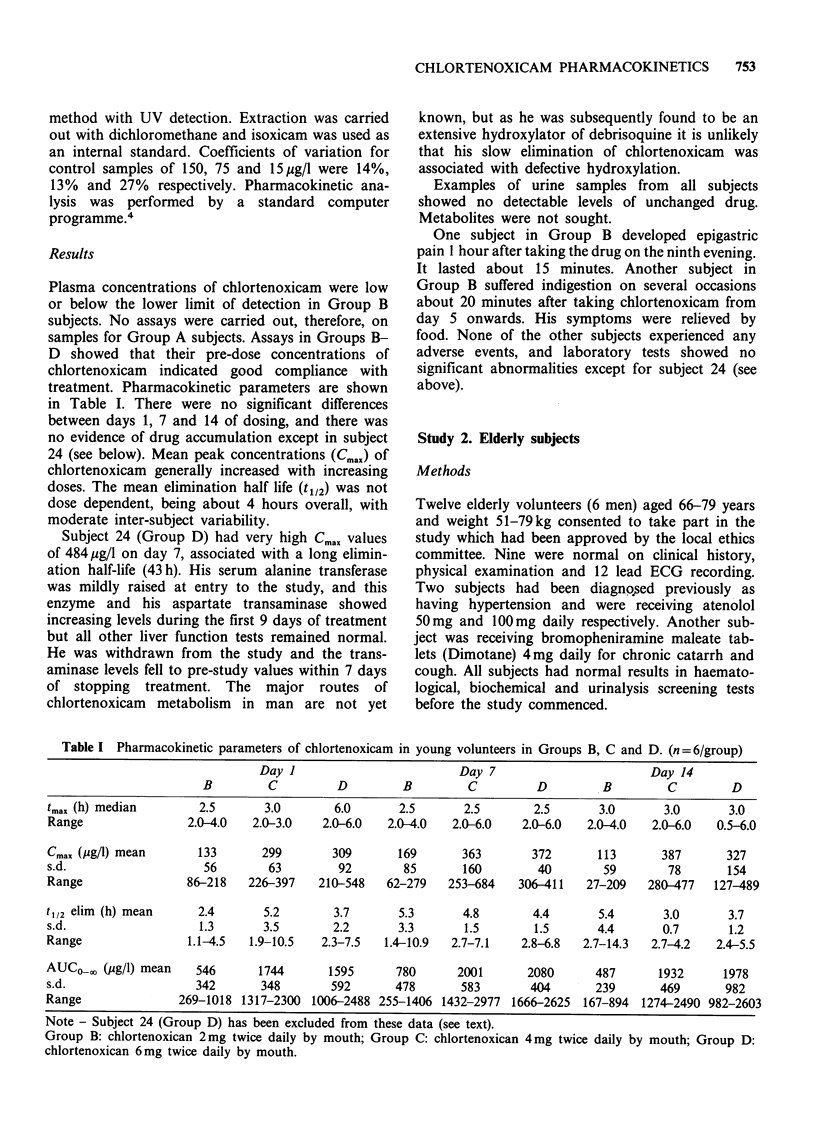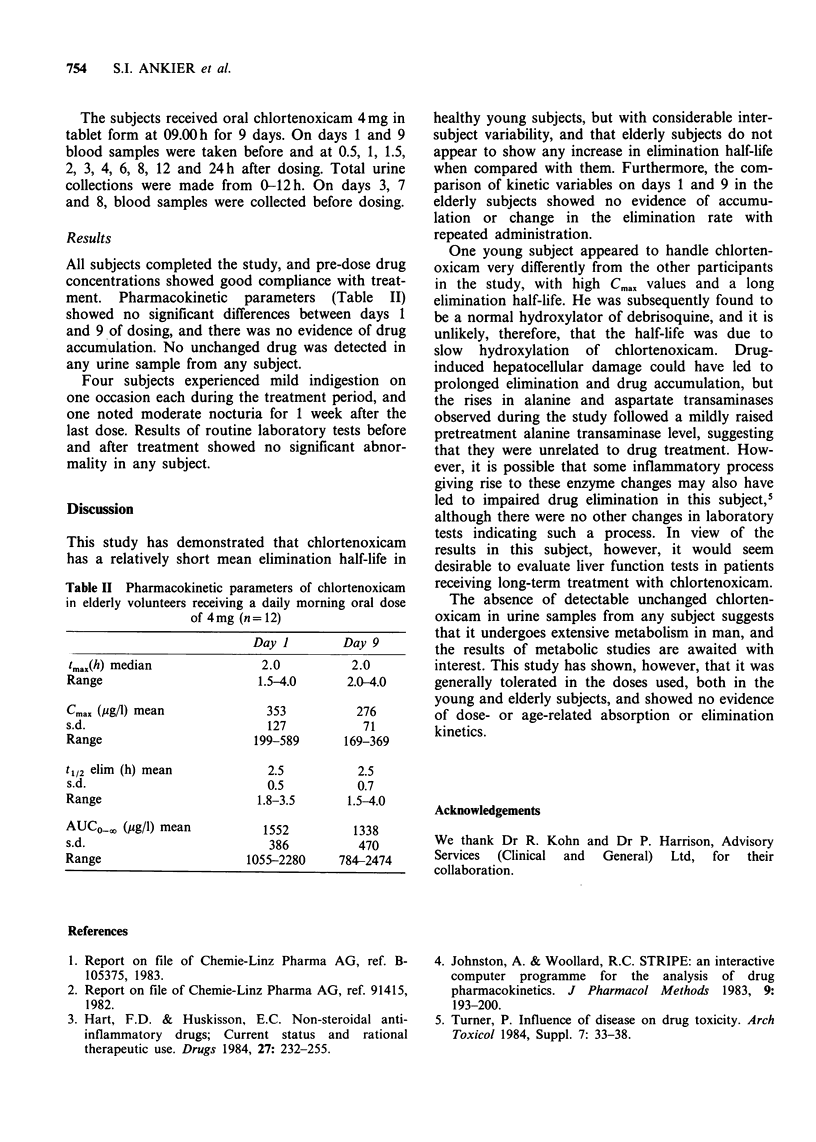Abstract
The pharmacokinetics of chlortenoxicam, a new non-steroidal anti-inflammatory drug, have been compared in young and elderly healthy human volunteers. Chlortenoxicam was found to have a relatively short mean elimination half-life of about 4 hours, with considerable inter-subject variability, but there was no significant difference between young and elderly subjects. There was no evidence of accumulation with repeated administration. No unchanged chlortenoxicam was found in urine from any subject, suggesting that it undergoes extensive metabolism in man.
Full text
PDF


Selected References
These references are in PubMed. This may not be the complete list of references from this article.
- Hart F. D., Huskisson E. C. Non-steroidal anti-inflammatory drugs. Current status and rational therapeutic use. Drugs. 1984 Mar;27(3):232–255. doi: 10.2165/00003495-198427030-00004. [DOI] [PubMed] [Google Scholar]
- Johnston A., Woollard R. C. STRIPE: an interactive computer program for the analysis of drug pharmacokinetics. J Pharmacol Methods. 1983 May;9(3):193–199. doi: 10.1016/0160-5402(83)90038-4. [DOI] [PubMed] [Google Scholar]
- Turner P. Influence of disease on drug toxicity. Arch Toxicol Suppl. 1984;7:33–38. doi: 10.1007/978-3-642-69132-4_3. [DOI] [PubMed] [Google Scholar]


